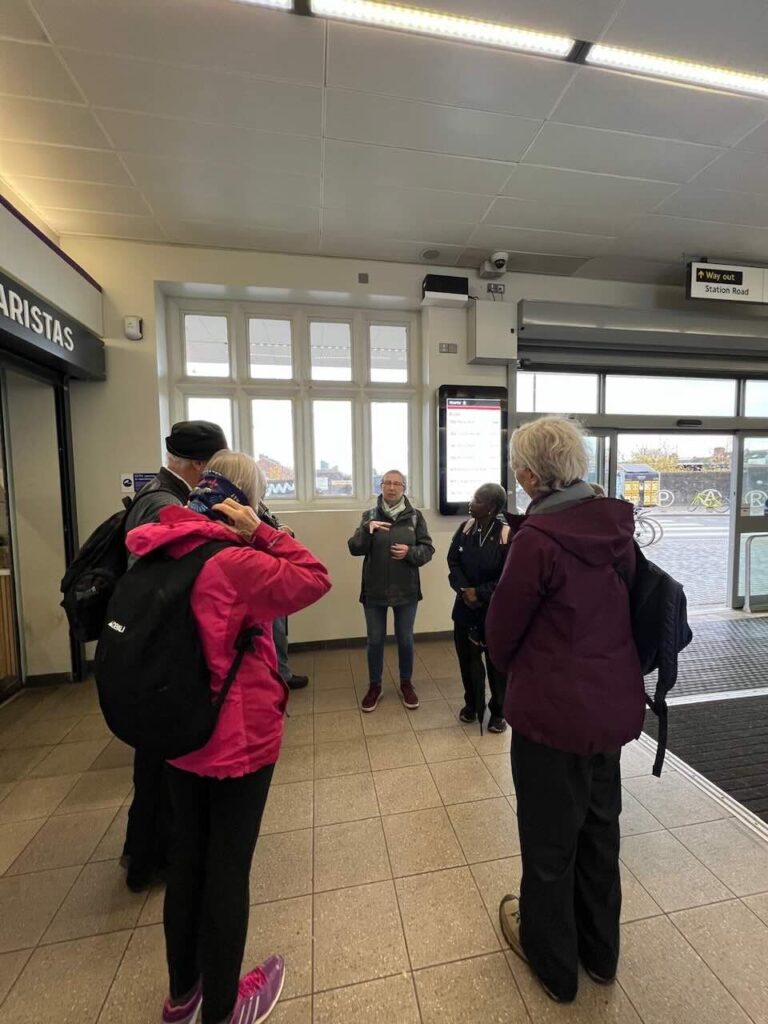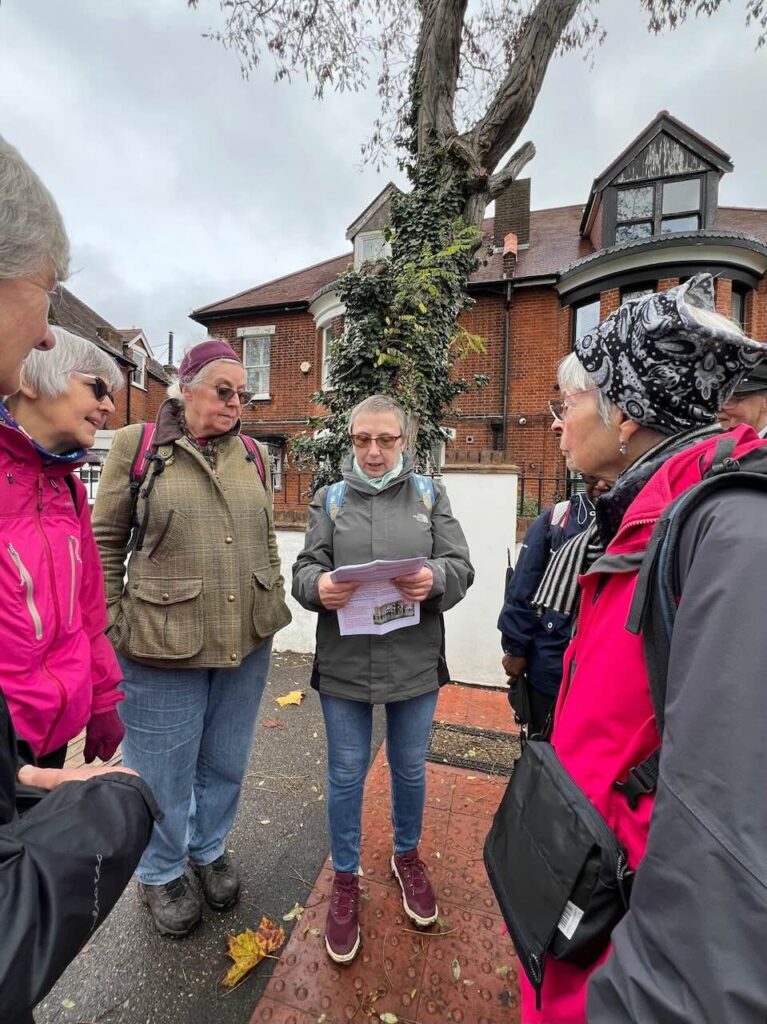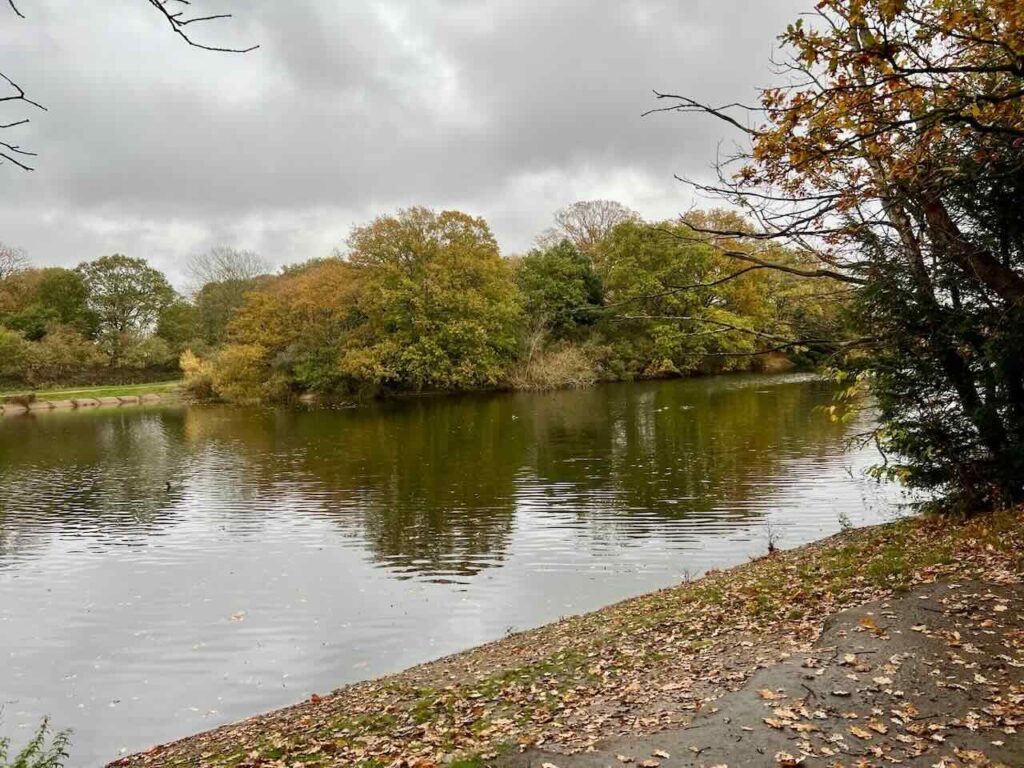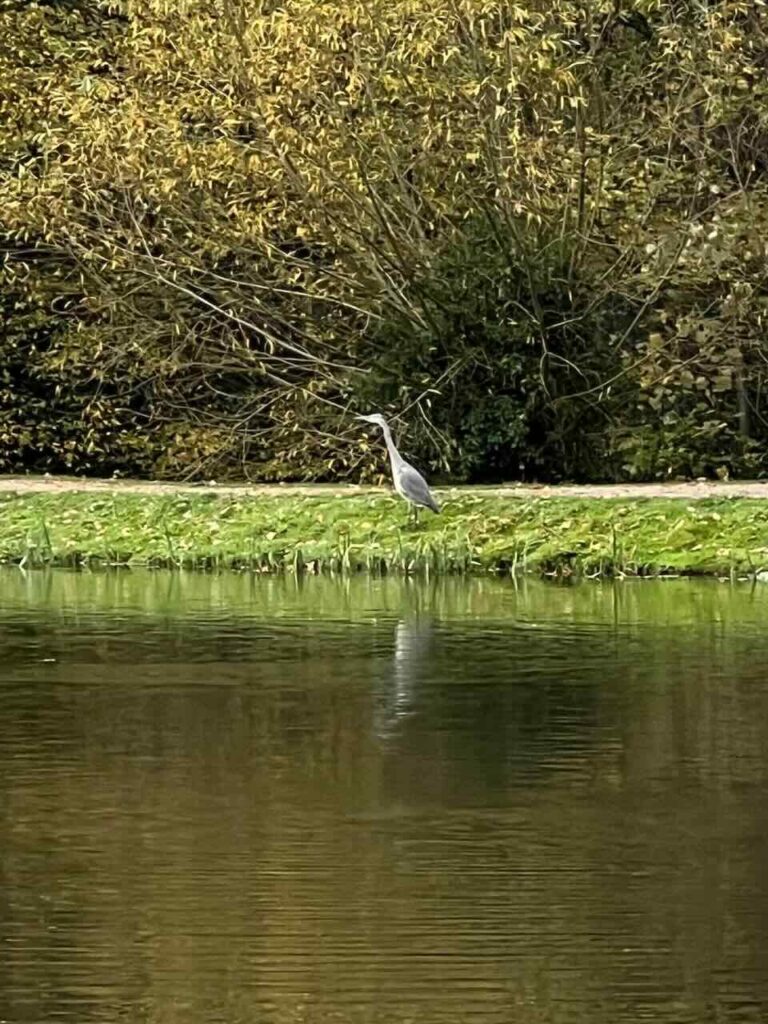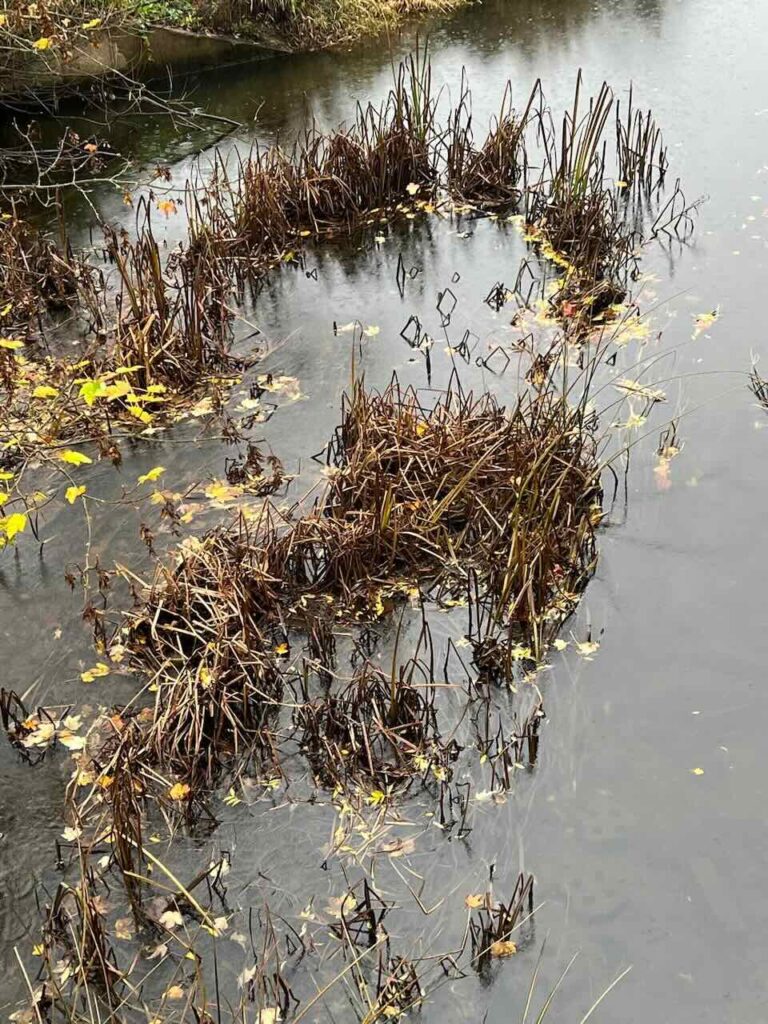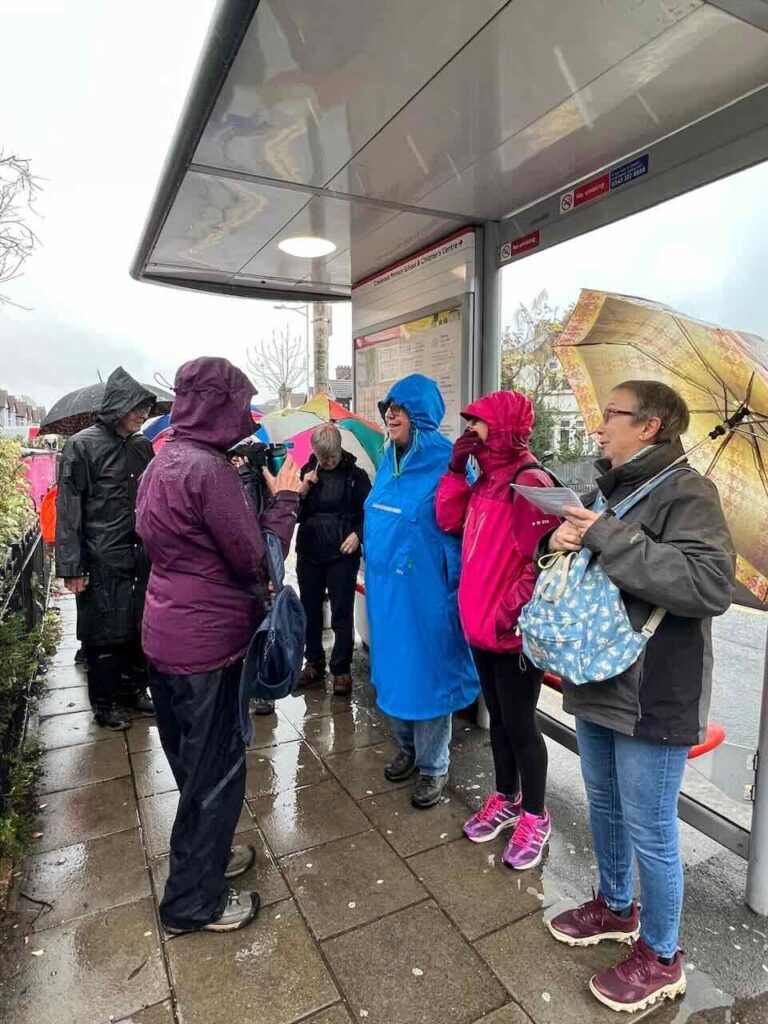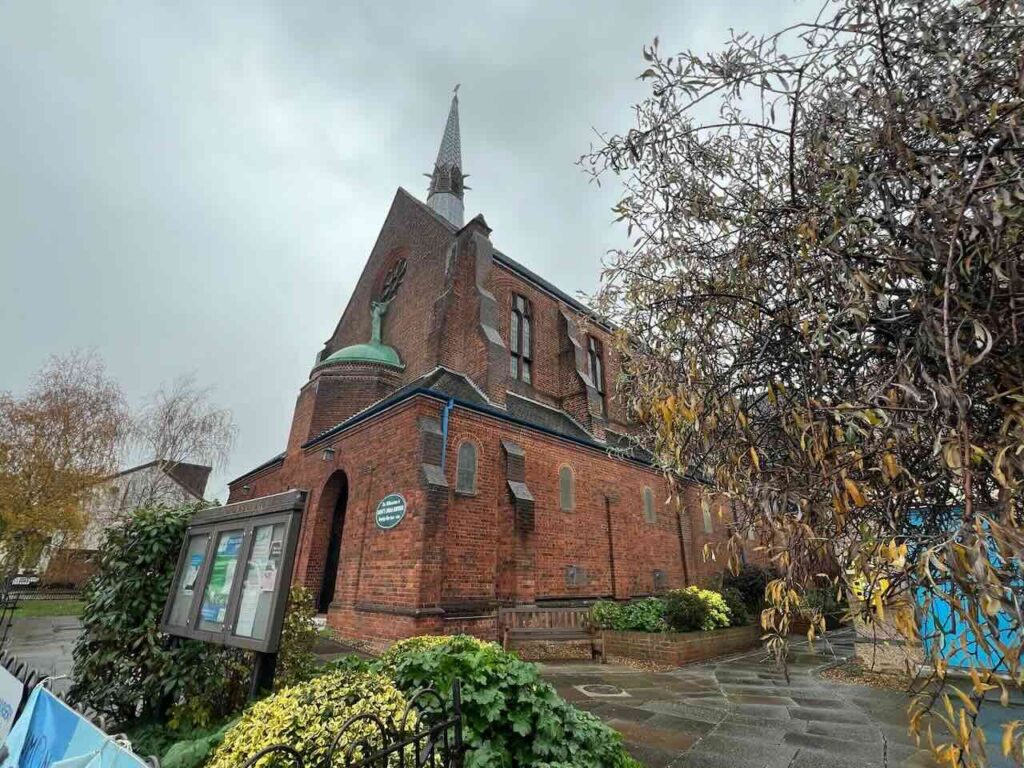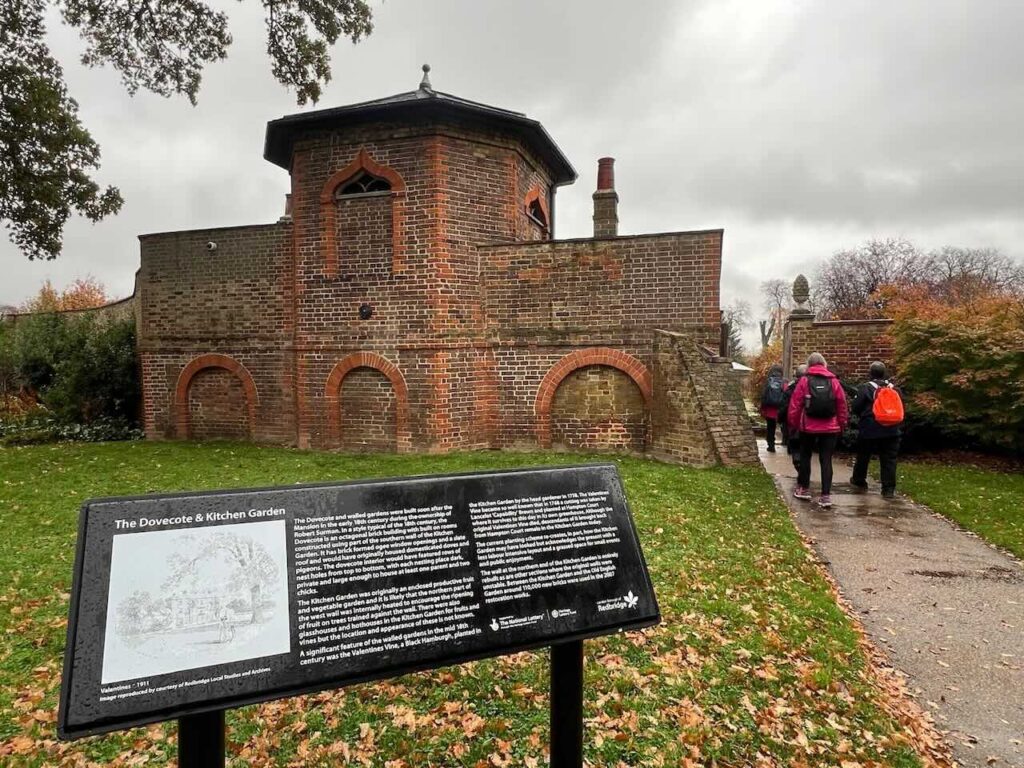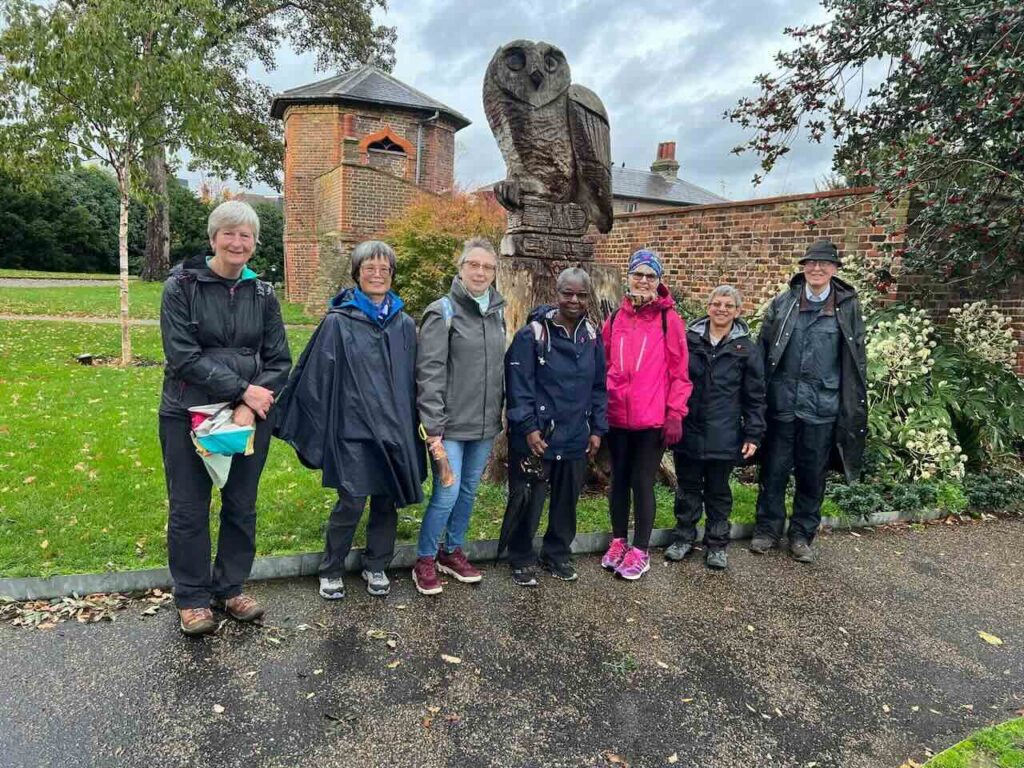Via Bridgewater Monument and Visitor Centre. One steep muddy ascent. Poles recommended.
Picnic lunch recommended. Refreshments at Visitor Centre and later in Aldbury.
Buy OPDR to Tring. Dep. Euston 09.24 arr. Tring 10.02.
Map: EX 181
Leader: Stephen
Via Bridgewater Monument and Visitor Centre. One steep muddy ascent. Poles recommended.
Picnic lunch recommended. Refreshments at Visitor Centre and later in Aldbury.
Buy OPDR to Tring. Dep. Euston 09.24 arr. Tring 10.02.
Map: EX 181
Leader: Stephen
Along the River to Battersea Power Station tube (Northern Line). Green spaces, iconic bridges, the river’s industry and architecture.
Meet 10.30 Putney Bridge station (District Line).
Picnic in Battersea Park or snacks and drinks are available from a wagon.
Leader Jackie C.
The photo above is ‘Putney Bridge, London’ by Edwardx, published under the Creative Commons Attribution-Share Alike 4.0 license.
Eleven hardy walkers arrived at Chorleywood Station on a very cold and wet morning. After the safety briefing, we started the walk but stopped again within a few minutes for a toilet break in a local cafe. The reason being that the railway station facilities were all locked (the station was unmanned).
Then our walk took us through Carpenters Wood with its really lovely autumn colours and a carpet of fallen leaves. One of the polyramblers decided to turn back at this point because the path was very slippery in places. The rest of us continued on to Chenies, along a tarmac path past Mountwood Farm and then took a steep decent down to the watercress beds. After this, we climbed a steep hill up to the Church and to the pub ‘The Cock Inn’.
Here we had our lunch, some taking shelter from the cold in the Church (the radiators were on!) while others went for some food and a drink in the pub. After lunch, another polyrambler decided to call it a day. Then the remaining ten of us walked down to Sarratt Mills and on to Chorleywood Common after crossing the River Chess. We stopped to admire the Memorial tree and then headed back to the Station.
A few us decided to have tea and cake in a local cafe while the rest caught the train back to town.
Sunita
Photos by Nita, Gillian and Chris
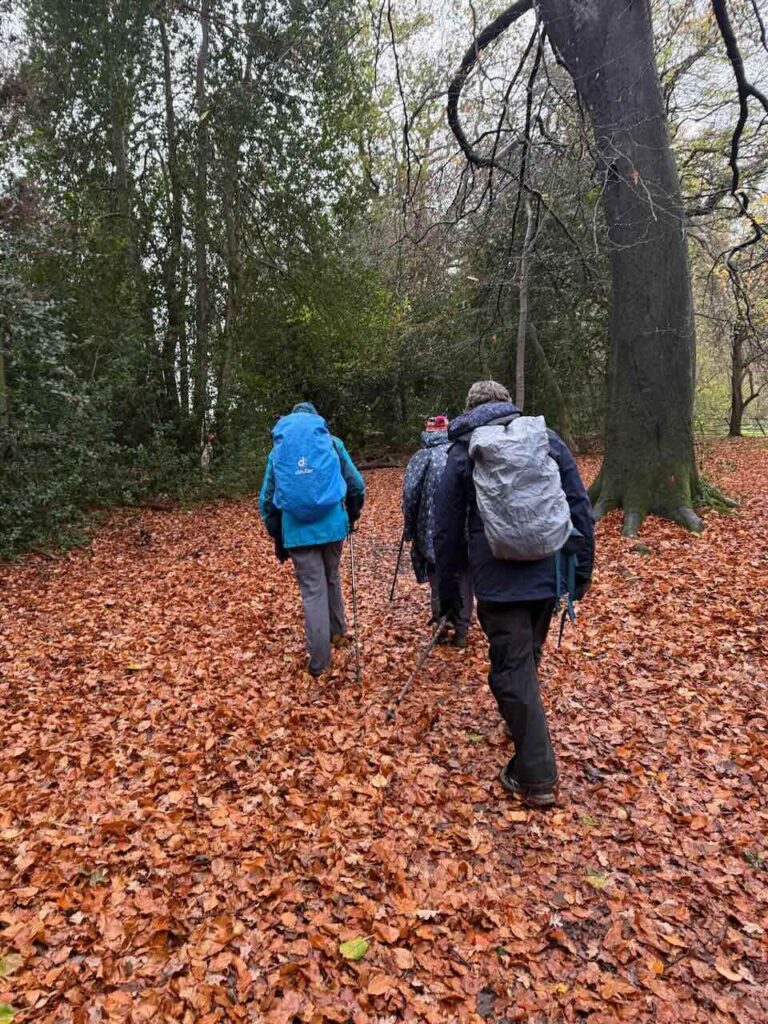
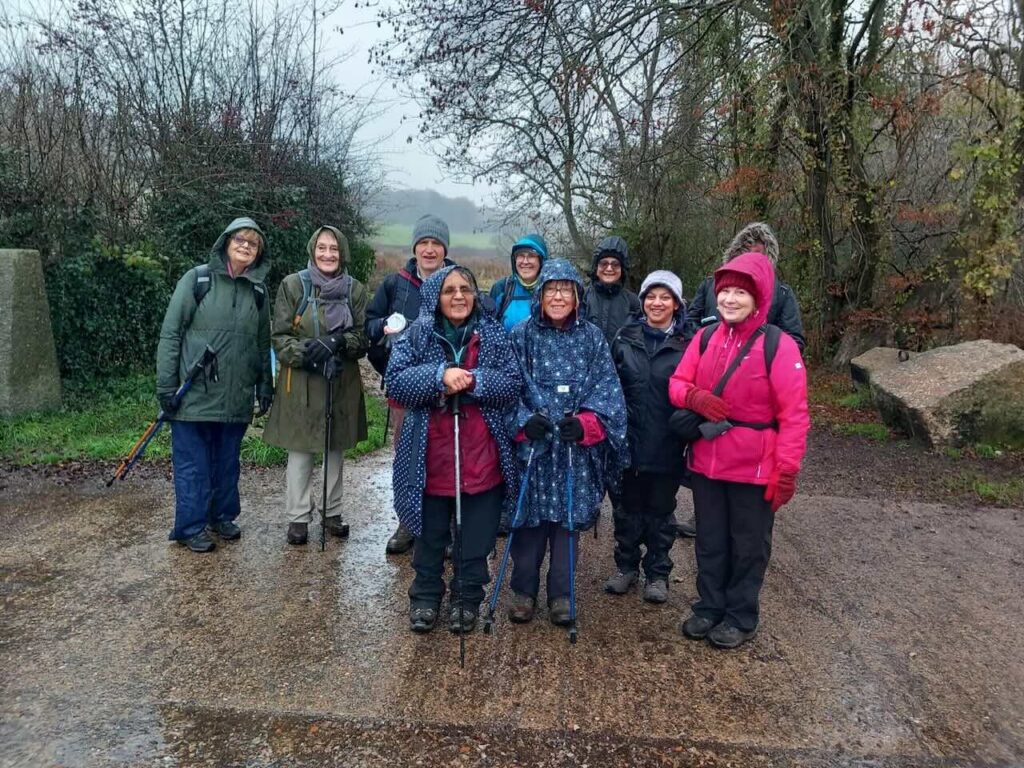
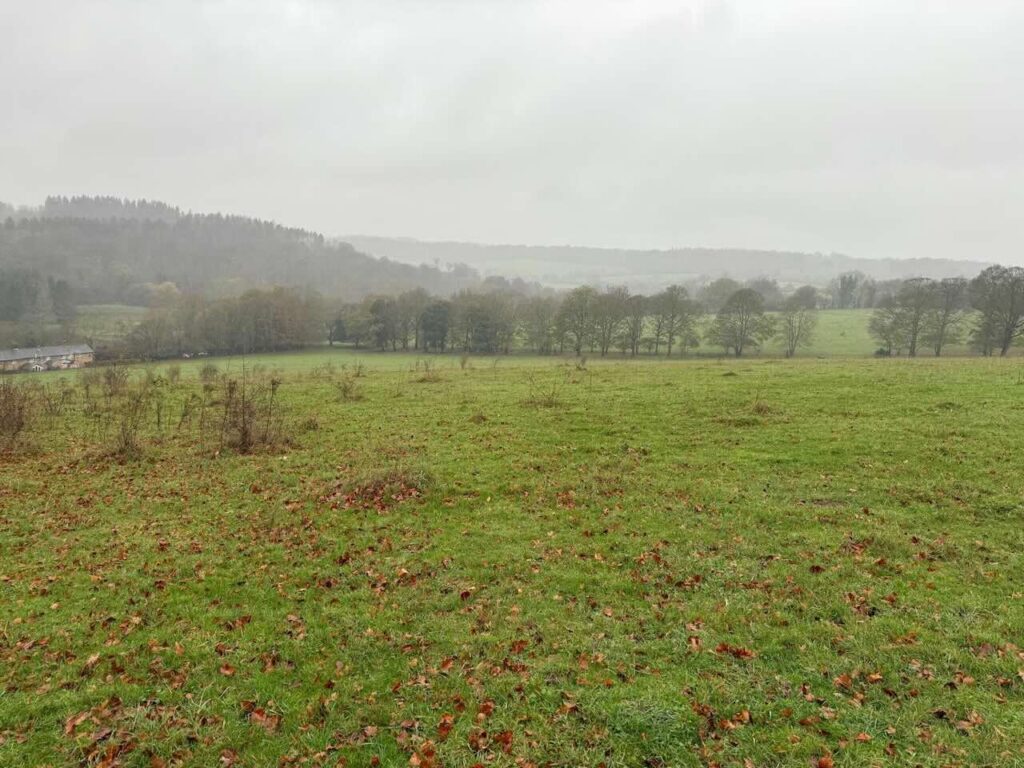
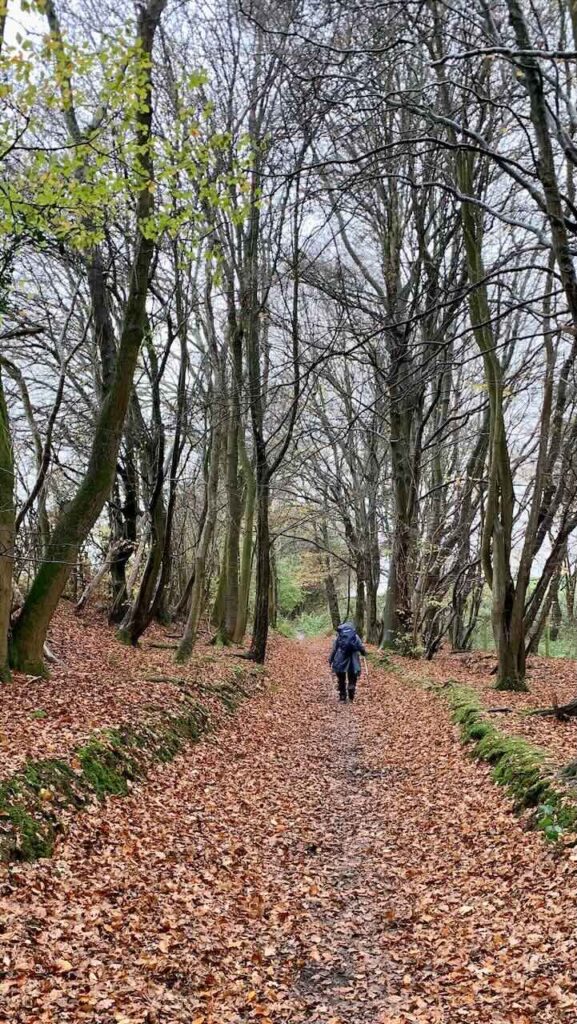
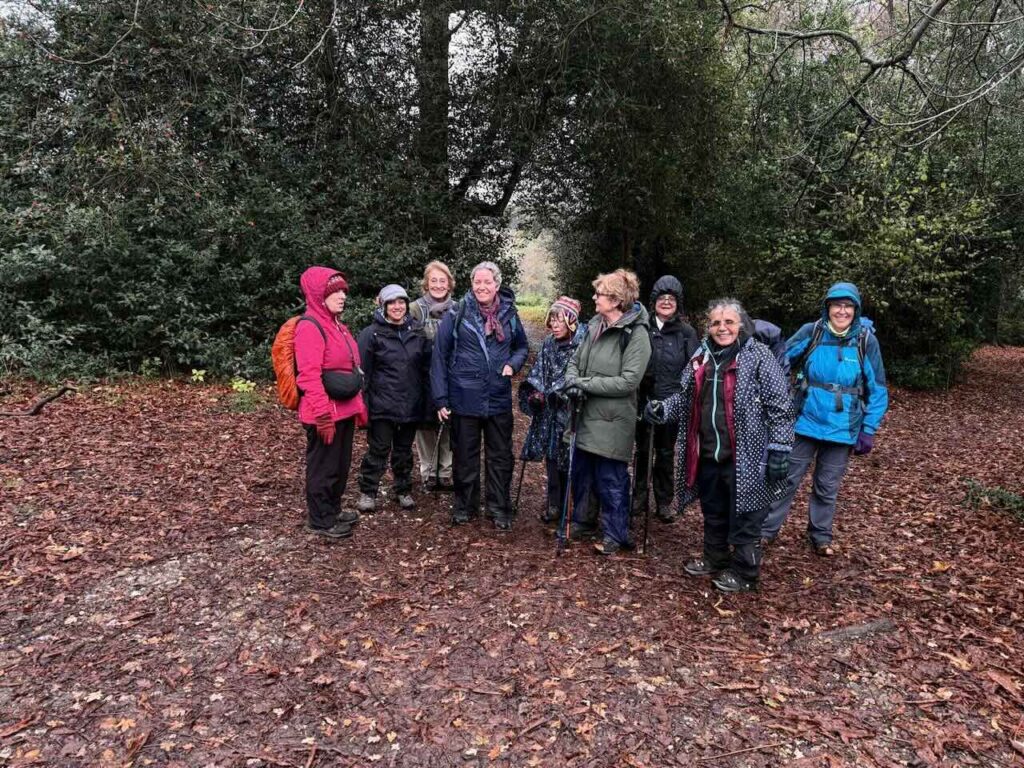
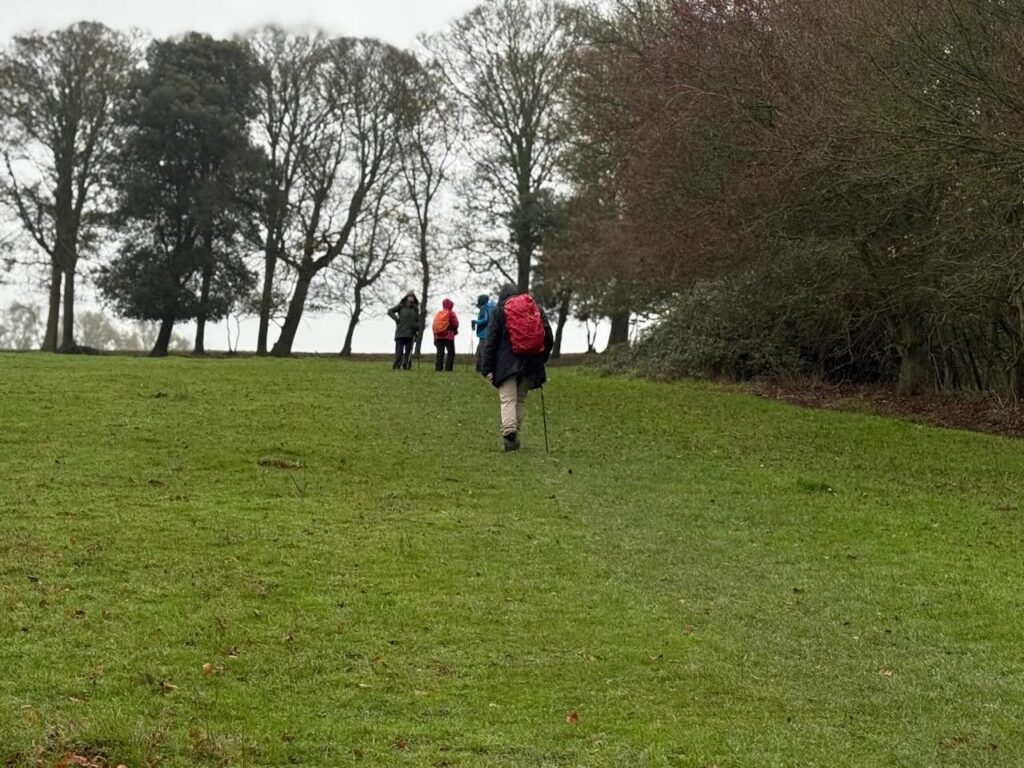
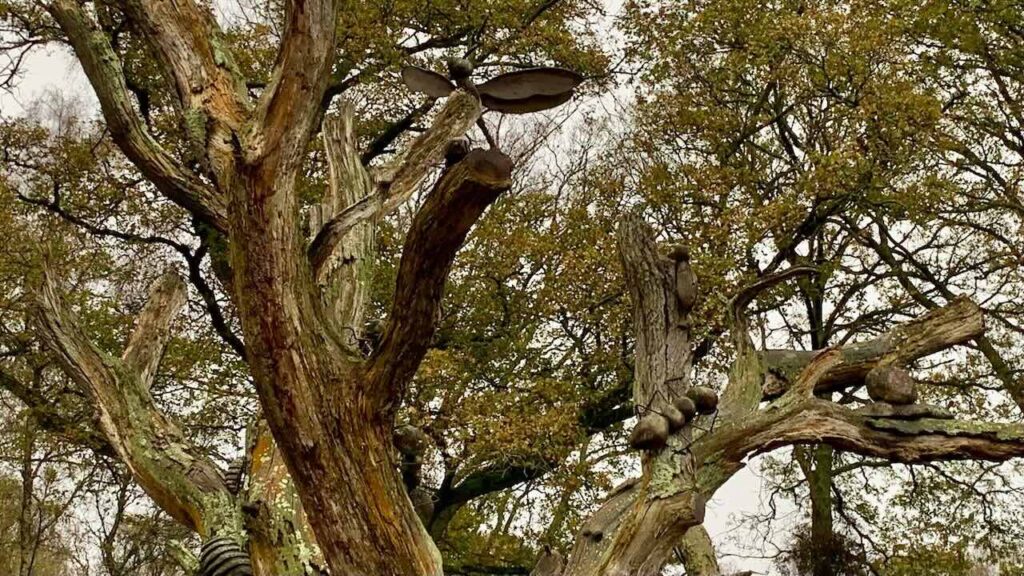
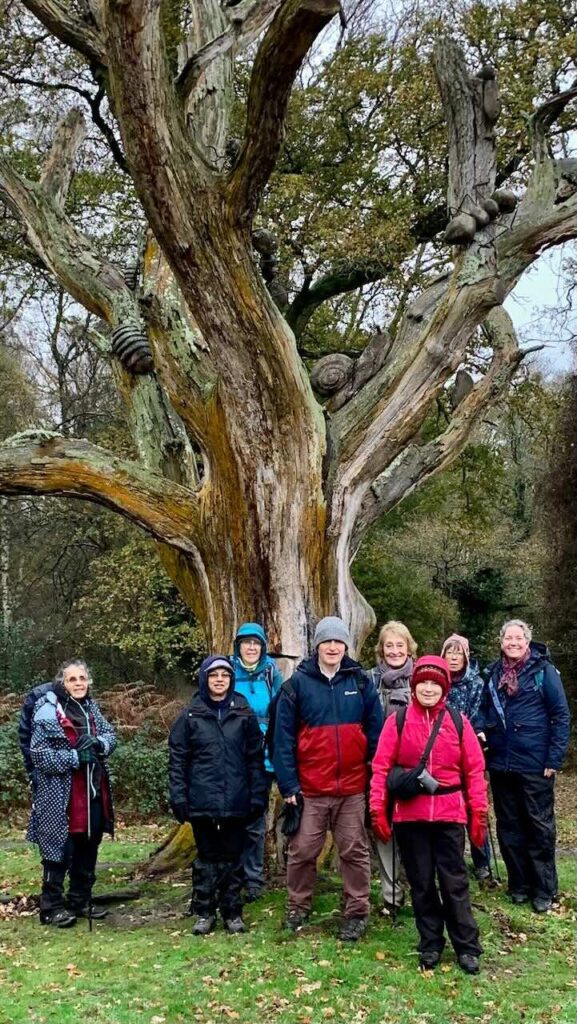
This eight mile section of the Vanguard Way goes through an idyllic area of rolling countryside and small farms mostly in open countryside and pastures.
Nine Poly Ramblers undertook the complicated train and bus route to start section six of the Vanguard Way on the Uckfield road in the Wealden District East Sussex. The signage for the route had recently been renewed; it sadly did not prevent us from going in the wrong direction twice!
We were fortunate to have pleasant weather after a week of heavy rain as we made our way through pastures and woodland crossing the river Uck at intervals. We enjoyed exceptionally clear views en route.
We stopped for a picnic lunch at the Holy Trinity Church High Hurstwood, finding plenty of seating on the benches in the churchyard. The church was of an unusual design with its partly half-timbered porch tower and flat bellcote.
After a short lunch we resumed our route through woodland and fields passing pillboxes which had been hastily constructed during the second world war when the threat of invasion appeared very real. The name comes from their similarity in shape to boxes that used to be provided by pharmacists for medicinal pills.
We went through the arch under the East Croydon to Uckfield line, in our hurry to get to our destination in light and on time to catch the hourly bus, we took the wrong path across the next field and walked up a lane away from the route. Luckily a local person helpfully guided us back, we quickened our pace to make up for lost time. We walked along a lane (Nan Tucks Lane) following a track through trees, over a stream and continued into a junk filled farm yard (Scantlins Farm).
At a carved wooden Vanguard sign attached to a container we followed a broad track through trees to cross the picturesque Tickerage Mill at a weir with mill pond. We finished our route via allotments and passed the Village Hall to the Blackboys crossroads where section six ended. We were fifteen minutes early for the bus thanks to the brisk pace of our Poly Ramblers.
Hilary
Photos from Hilary (of the walkover) and Les
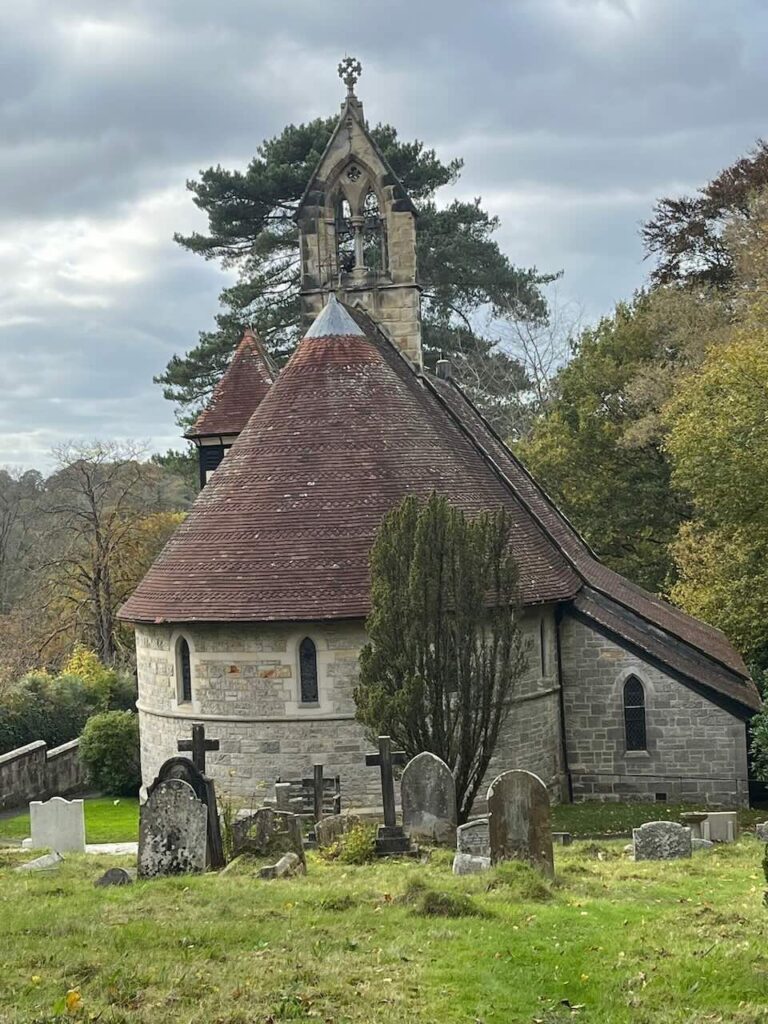
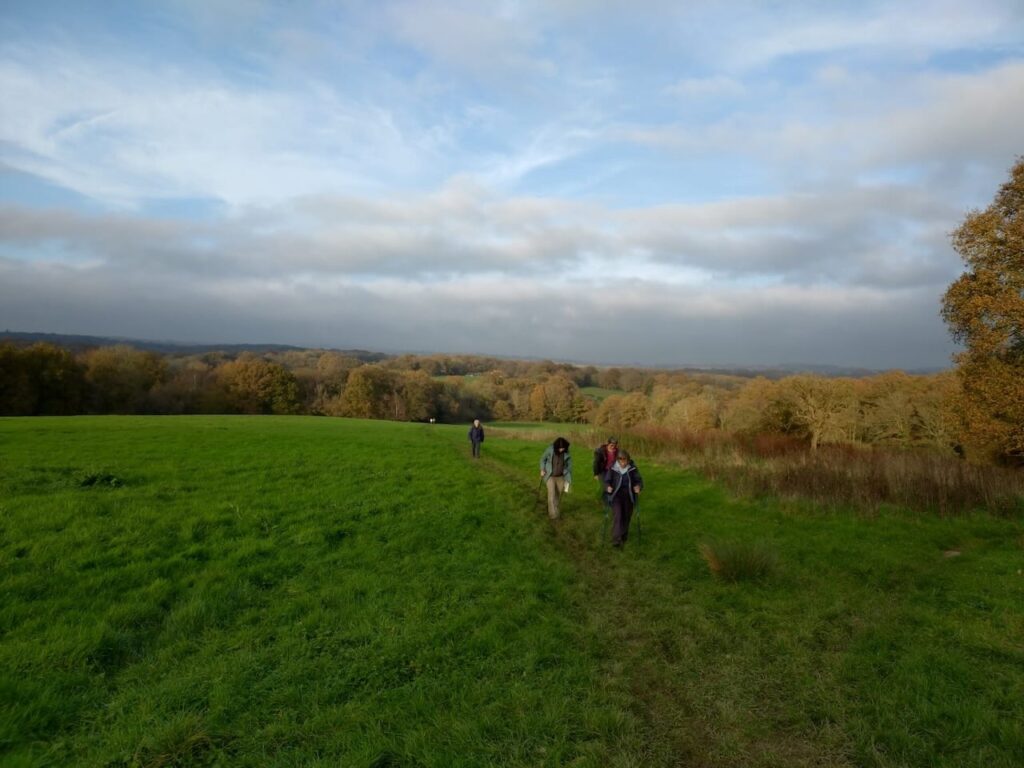
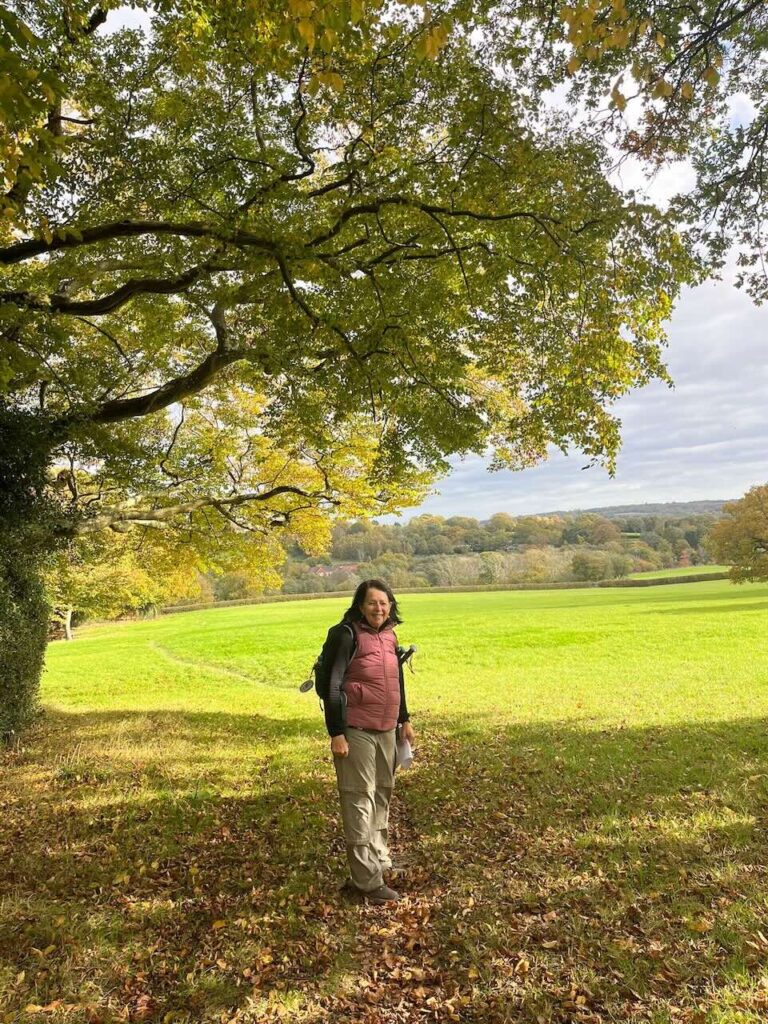
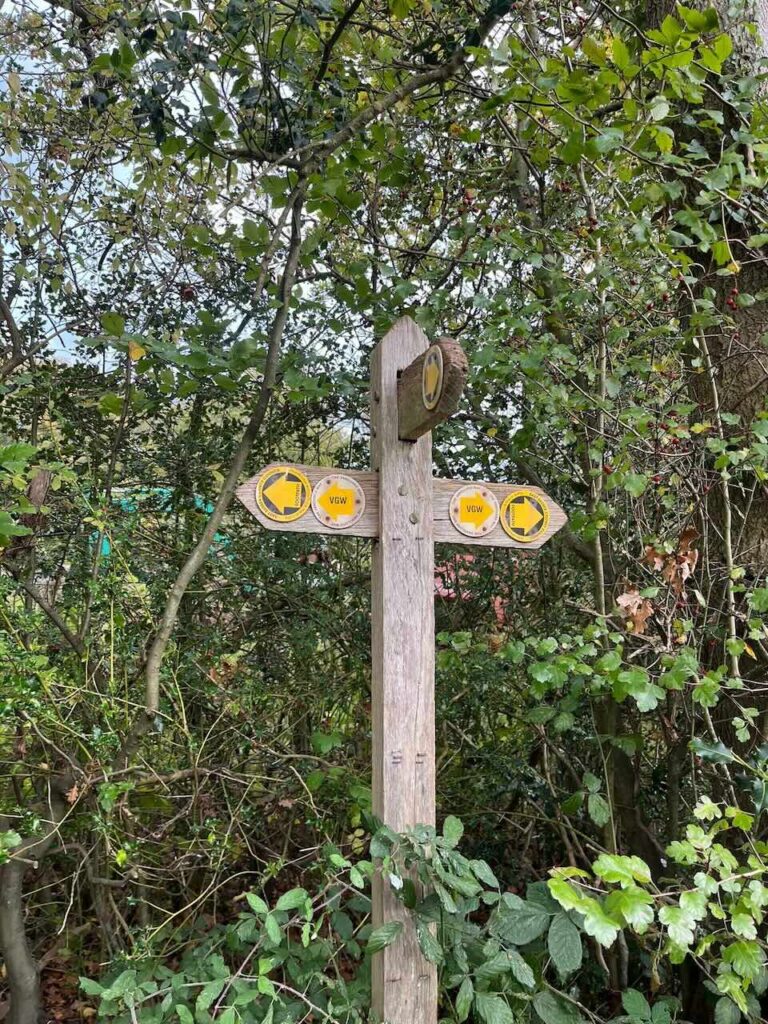
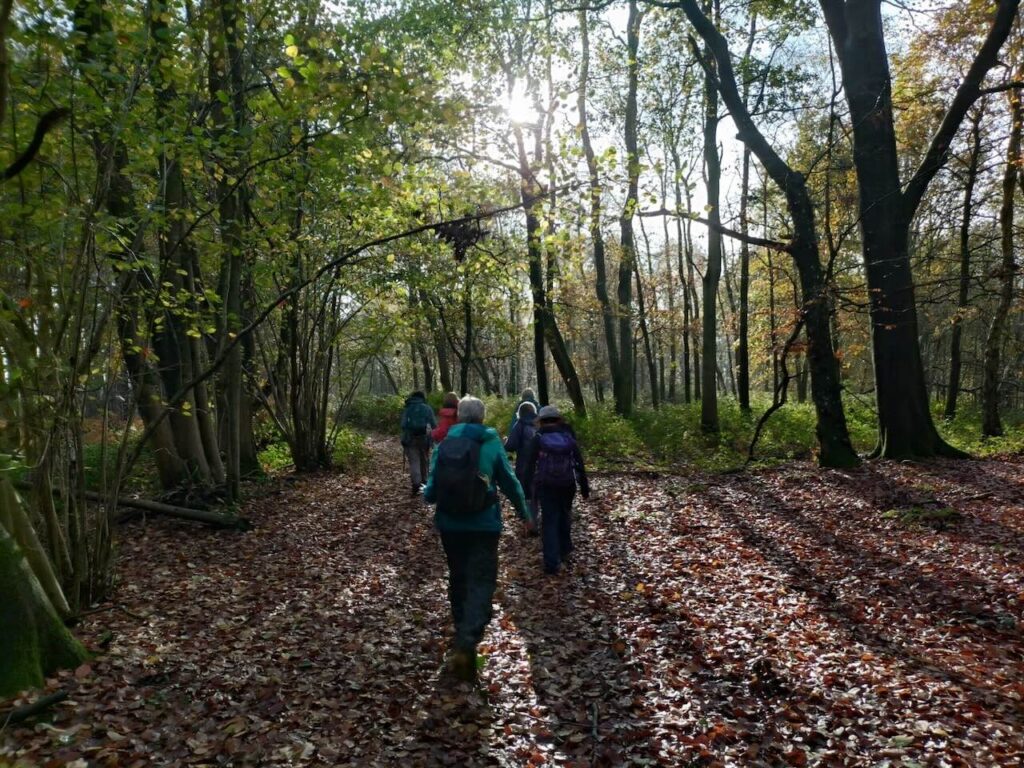
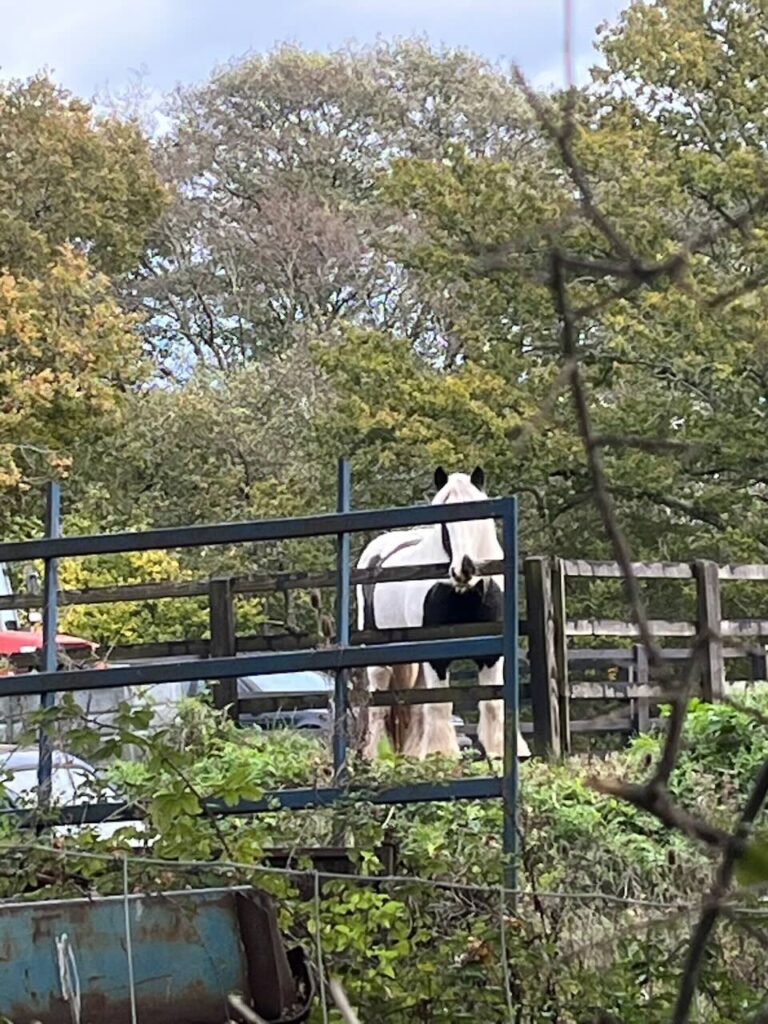
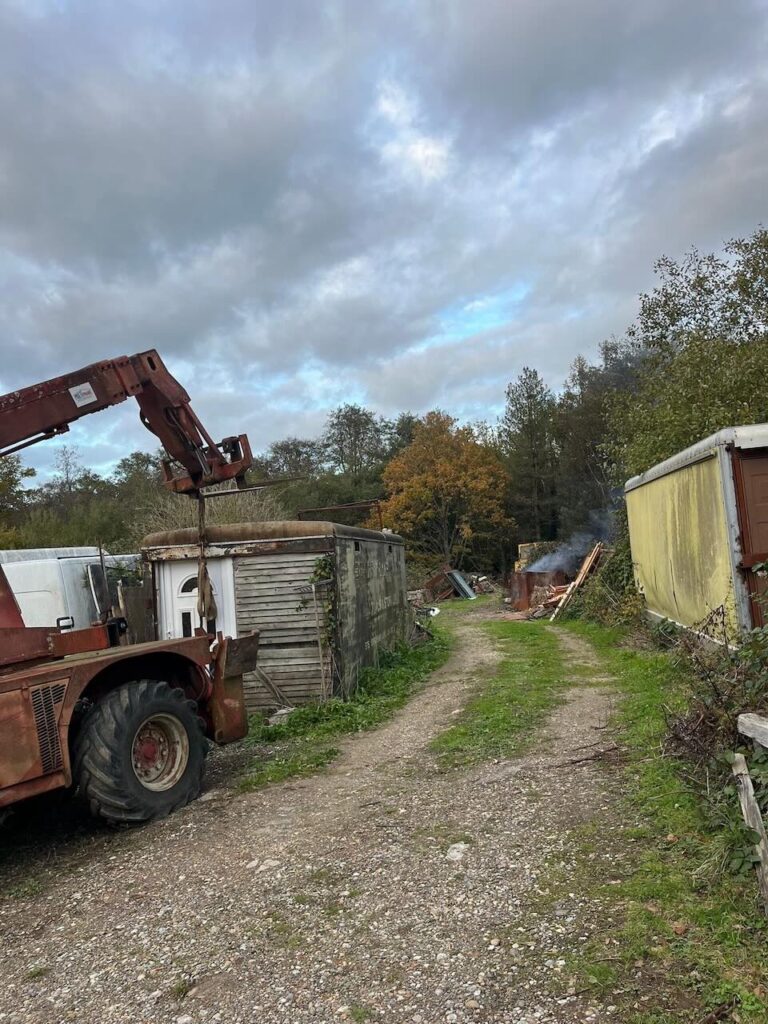
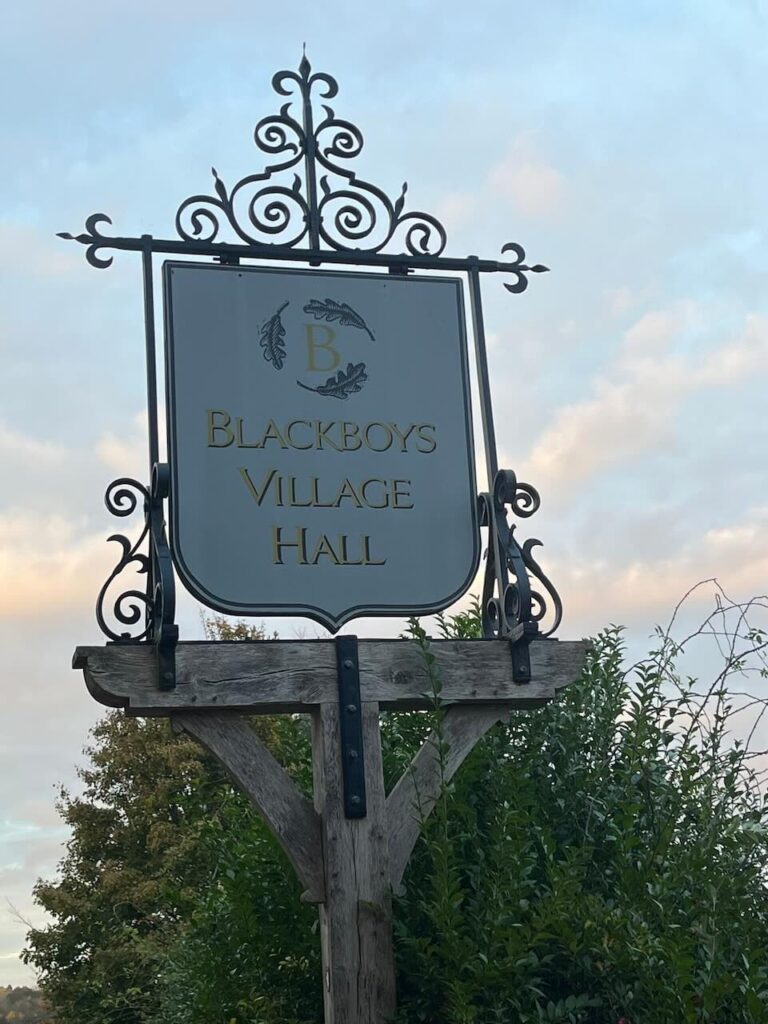
9 brave Polyramblers turned up at Manor Park station on an inauspicious day for a 6.5 miles walk through parklands. We started with flat Wanstead Flats, passing Alexandra Lake dug at the beginning of the 20th century to give work to unemployed men. The lake was named after Alexandra of Denmark, the Queen Consort of King Edward VII. Next was Wanstead Park where we walked along lakes, then crossed over the river Roding as the rain started.
We passed St Andrew’s Church – Grade II listed – which is of a similar design to Pretoria Church in South Africa (that’s what my guide says). After some road walking, we reached Valentines Park as the rain eased off. We had the Garden Courtyard Cafe to ourselves for our lunch break. Afterwards, we visited Valentines Mansion (free to visit and open Sundays and Mondays) – built in 1696 for Elizabeth, Lady Tillotson, the widow of John Tillotson who had been the Archbishop of Canterbury. The Mansion was later the family home of Sir Charles Raymond who made money from interests in the East India Company. The house and grounds were then acquired by the Council who created a lovely public park with nice gardens and flower beds.
Two Polyramblers left after lunch and, as it was no longer raining, the rest of us walked around the park and the lakes. We were approached by many squirrels wanting food to store for the winter. It’s worth coming back to Valentines Park in spring or summer to enjoy the flowers but we enjoyed the autumn colours. We then made our way to Gant’s Hill station (which has a design similar to Moscow metro).
Dominique
Photos by Ida
